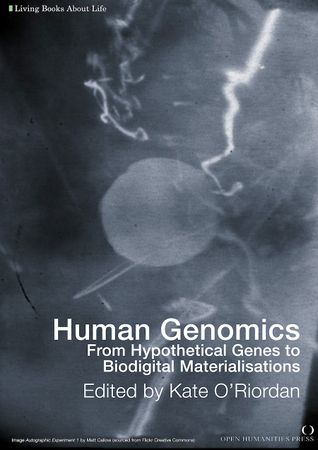Human Genomics: Difference between revisions
No edit summary |
|||
| Line 27: | Line 27: | ||
Section: 7 | Section: 7 | ||
Section: 8 - Making catalogues In 1966 a medical field coalesces through a catalogue and Dr Victor McKusick publishes the first print edition of Mendelian Inheritance in Man (MIM). This was an attempt to catalogue what was known about Mendelian phenotypes – or the physical expression of genetic material - as medically relevant characteristics. It later became Online Mendelian Inheritance in Man (OMIM). | Section: 8 - Making catalogues | ||
In 1966 a medical field coalesces through a catalogue and Dr Victor McKusick publishes the first print edition of Mendelian Inheritance in Man (MIM). This was an attempt to catalogue what was known about Mendelian phenotypes – or the physical expression of genetic material - as medically relevant characteristics. It later became Online Mendelian Inheritance in Man (OMIM). | |||
*[http://www.ncbi.nlm.nih.gov/pmc/articles/PMC2686440/ Amberger, Joanna. Bocchini, Carol A. Scott, Alan F. and Hamosh, Ada. McKusick's Online Mendelian Inheritance in Man (OMIM®) Nucleic Acids Res. 2009 January; 37(Database issue): D793–D796.] | *[http://www.ncbi.nlm.nih.gov/pmc/articles/PMC2686440/ Amberger, Joanna. Bocchini, Carol A. Scott, Alan F. and Hamosh, Ada. McKusick's Online Mendelian Inheritance in Man (OMIM®) Nucleic Acids Res. 2009 January; 37(Database issue): D793–D796.] | ||
Revision as of 12:21, 31 July 2011

Human genomics: from hypothetical genes to biodigital materialisations
Edited by Kate O'Riordan
Contents
Introduction
Sections
Section: 1
Section: 2
Section: 3
Section: 4
Section: 5
Section: 6
Section: 7
Section: 8 - Making catalogues
In 1966 a medical field coalesces through a catalogue and Dr Victor McKusick publishes the first print edition of Mendelian Inheritance in Man (MIM). This was an attempt to catalogue what was known about Mendelian phenotypes – or the physical expression of genetic material - as medically relevant characteristics. It later became Online Mendelian Inheritance in Man (OMIM).
Abstract: McKusick's Online Mendelian Inheritance in Man (OMIM®; http://www.ncbi.nlm.nih.gov/omim), a knowledgebase of human genes and phenotypes, was originally published as a book, Mendelian Inheritance in Man, in 1966. The content of OMIM is derived exclusively from the published biomedical literature and is updated daily. It currently contains 18 961 full-text entries describing phenotypes and genes. To date, 2239 genes have mutations causing disease, and 3770 diseases have a molecular basis. Approximately 70 new entries are added and 700 entries are updated per month. OMIM® is expanding content and organization in response to shifting biological paradigms and advancing biotechnology.
Section: 9 - The new genetics
The genetics of the 1950s helped to signal a break from the associations that had been made between human genetics and forms of social eugenics in the late 19th century and first half of the 20th century. This period of ‘discovery’ science also lead the way in providing narratives of scientific heroes as ordinary guys (McNeil). A version of scientific discovery that still resonates today as genetic heroics were reproduced by Craig Venter and John Sulston during the Human Genome Project, in biographies, autobiographies, popular science writing, news media and documentary.
In July 25, 1953 Rosalind Franklin and Gosling detail the distinctions between the A and B structures of the double helix in DNA and Watson and Crick publish their article on the structure of DNA.
- Franklin R. and Gosling R.G. 1953. Evidence for 2-Chain Helix in Crystalline Structure of Sodium Deoxyribonucleate Nature 172, 156-157 (1953)
- Watson J.D. and Crick F.H.C. 1953. A Structure for Deoxyribose Nucleic Acid Nature 171, 737-738 (1953)
Attributions
